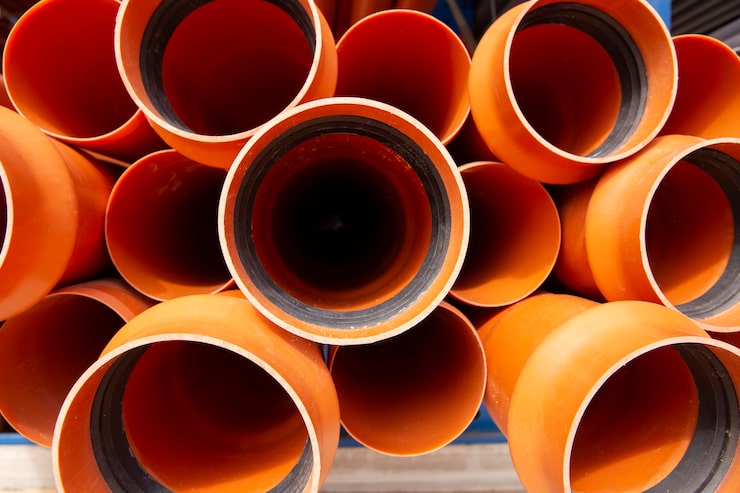The piping industry refers to the global sector involved in the design, manufacturing, installation, and maintenance of piping systems used to transport liquids, gases, and sometimes solids in various industrial, commercial, and residential applications. It plays a crucial role in industries such as oil and gas, chemical processing, water treatment, power generation, construction, and food production. The piping industry serves as the backbone of modern infrastructure, ensuring that essential fluids and gases are delivered safely, efficiently, and in compliance with strict regulatory standards.
A piping system is far more than just pipes. It includes fittings, valves, flanges, pumps, gaskets, supports, and insulation—all engineered to withstand specific pressures, temperatures, and chemical exposures. The piping industry brings together a wide range of expertise, including mechanical engineering, materials science, safety management, and environmental compliance, to provide reliable solutions that keep industrial operations running smoothly.

Scope and importance of the piping industry
The scope of the piping industry is extensive. It covers everything from designing complex piping networks for oil refineries to producing high-purity systems for pharmaceutical manufacturing. In the energy sector, piping systems move crude oil, refined products, natural gas, and steam. In municipal projects, they deliver clean water to communities and carry wastewater to treatment plants.
The importance of the piping industry lies in its ability to support critical infrastructure and economic development. Without robust piping systems, manufacturing plants could not operate efficiently, cities could not supply clean water, and power plants could not generate electricity at scale. Furthermore, the industry directly influences safety, productivity, and environmental protection.
Core components and materials
The piping industry works with a variety of materials to suit different applications:
Carbon steel – Strong and economical, widely used in high-pressure, high-temperature systems.
Stainless steel – Corrosion-resistant and suitable for chemical, food, and pharmaceutical industries.
Alloy steel – Designed for specialized conditions involving heat or aggressive chemicals.
Plastic piping (PVC, CPVC, HDPE, PPR) – Lightweight, corrosion-resistant, and ideal for low-pressure or corrosive environments.
Copper and brass – Preferred for certain water, HVAC, and antimicrobial applications.
Each material is chosen based on mechanical strength, corrosion resistance, cost-effectiveness, and compatibility with the transported medium. The selection process is guided by engineering standards and customer requirements.
Key sectors served by the piping industry
The piping industry serves a wide range of sectors, each with its own technical challenges:
Oil and gas – Pipelines transport crude oil, refined fuels, and natural gas over long distances and through processing plants.
Chemical processing – Piping systems handle corrosive substances under controlled temperatures and pressures.
Power generation – Steam and cooling water systems are essential for thermal and nuclear power plants.
Water and wastewater management – Municipal and industrial systems ensure safe water supply and waste disposal.
Food and beverage – Sanitary piping systems maintain hygiene standards for liquid and semi-liquid products.
Construction and infrastructure – HVAC, fire protection, and plumbing systems all depend on piping expertise.
Design and engineering in the piping industry
The piping industry relies heavily on engineering design principles to ensure safety, efficiency, and regulatory compliance. Factors considered during design include:
Flow rate and velocity – Ensuring the system can handle the required volume without excessive pressure drop.
Pressure and temperature ratings – Selecting pipe wall thickness and materials that can safely withstand operating conditions.
Corrosion and wear resistance – Using protective coatings or resistant materials for aggressive environments.
Thermal expansion – Allowing for movement due to temperature changes through expansion joints or loops.
Maintenance accessibility – Designing layouts that facilitate inspection, repair, and replacement.
Industry standards such as ASME B31, ISO specifications, and API guidelines provide a framework for safe and consistent design.
Manufacturing and fabrication
Piping industry manufacturing involves producing pipes and related components to precise tolerances. Processes include:
Seamless and welded pipe production.
Casting and forging of fittings and flanges.
Machining of valve bodies and other specialized parts.
Application of protective coatings or linings.
Quality control testing, including hydrostatic, ultrasonic, and radiographic inspections.
Fabrication shops assemble sections of piping systems—often referred to as spools—which are later installed on-site. This modular approach improves efficiency and reduces downtime during installation.
Installation and maintenance
Installation in the piping industry demands skilled labor and adherence to safety protocols. Workers must follow detailed isometric drawings, use appropriate welding or joining techniques, and ensure proper alignment and support. Incorrect installation can lead to leaks, premature wear, or catastrophic failures.
Maintenance is equally critical. Common activities include:
Inspecting for corrosion, cracks, or leaks.
Pressure testing to confirm integrity.
Cleaning and flushing systems.
Replacing worn gaskets, seals, and insulation.
Implementing predictive maintenance using sensors and monitoring tools.
A strong maintenance program extends the service life of piping systems and helps prevent costly shutdowns.
Safety and regulatory compliance
Safety is a non-negotiable priority in the piping industry. Systems must be designed and maintained to prevent leaks, explosions, and environmental contamination. Regulations vary by region and sector but often include:
Pressure vessel and piping codes (ASME, ANSI, ISO).
Environmental protection laws governing emissions and waste.
Workplace safety standards for handling hazardous materials.
Compliance not only avoids legal penalties but also protects workers, communities, and the environment.
Emerging trends in the piping industry
The piping industry is evolving in response to technological advances, sustainability goals, and market demands. Key trends include:
Digital twins and 3D modeling for more accurate design and simulation.
Smart sensors for real-time monitoring of flow, pressure, and temperature.
Corrosion-resistant composites that reduce maintenance needs.
Prefabricated modular systems for faster installation and lower labor costs.
Sustainable design practices to reduce energy consumption and carbon footprint.
These innovations are helping companies improve efficiency, safety, and environmental performance.


